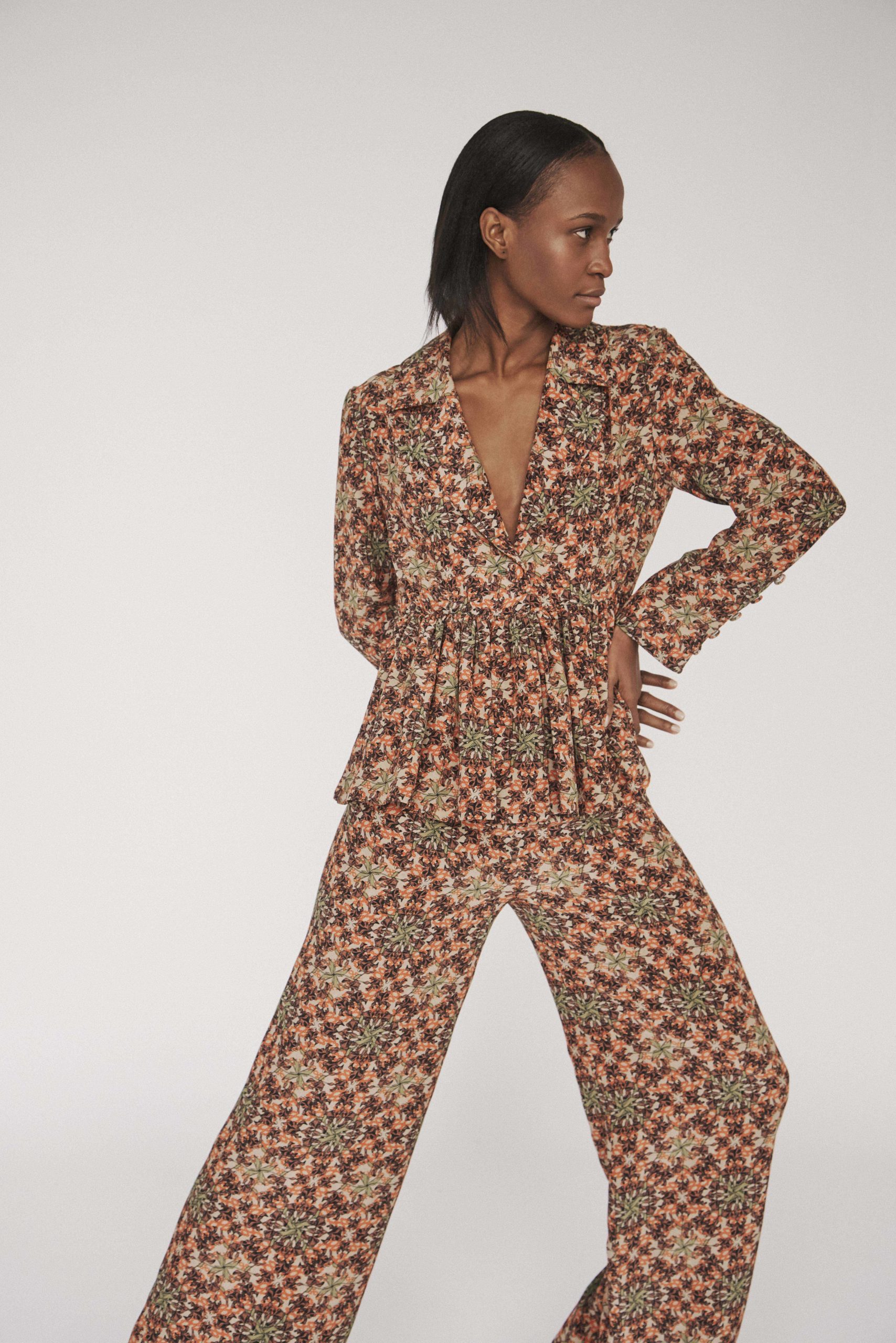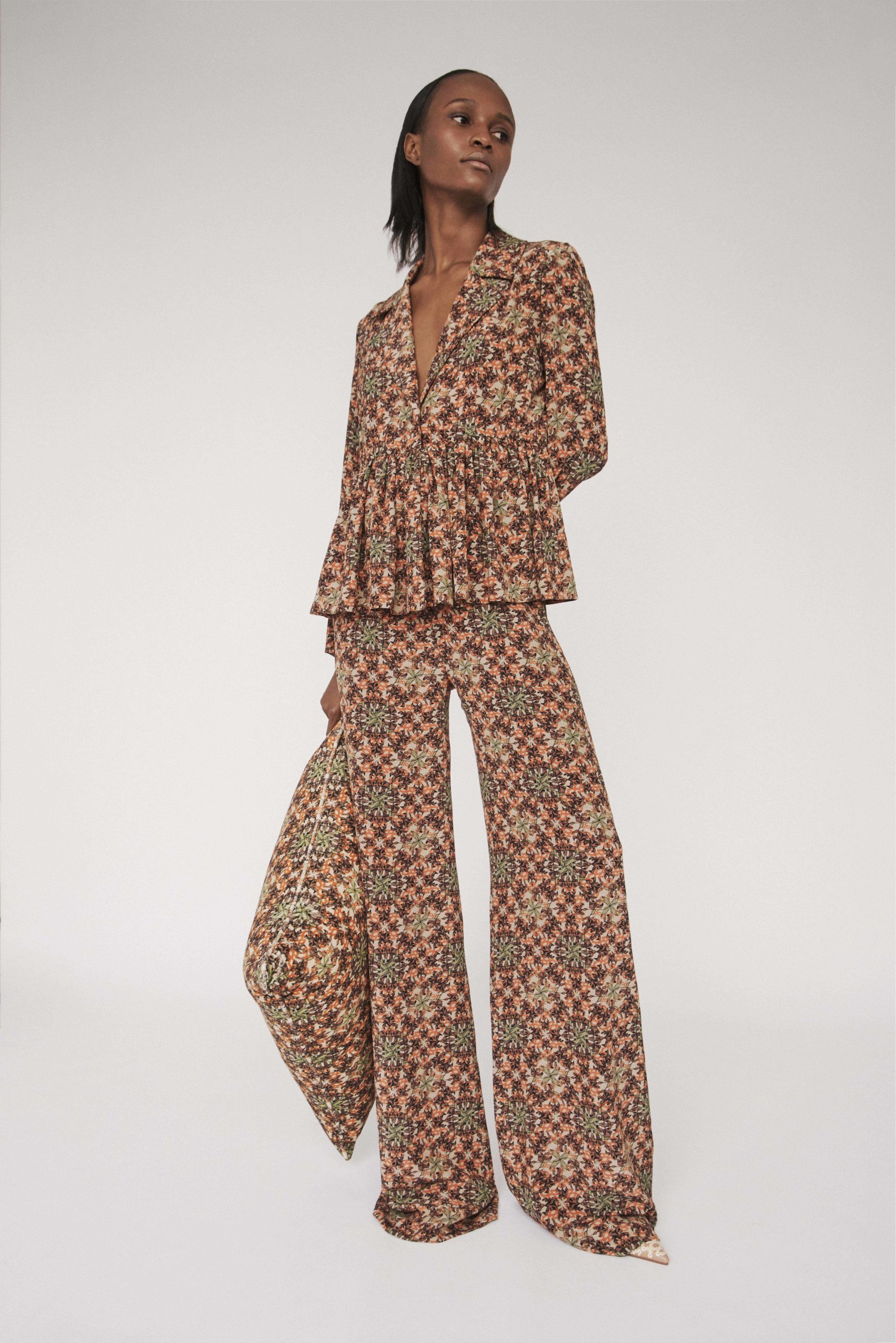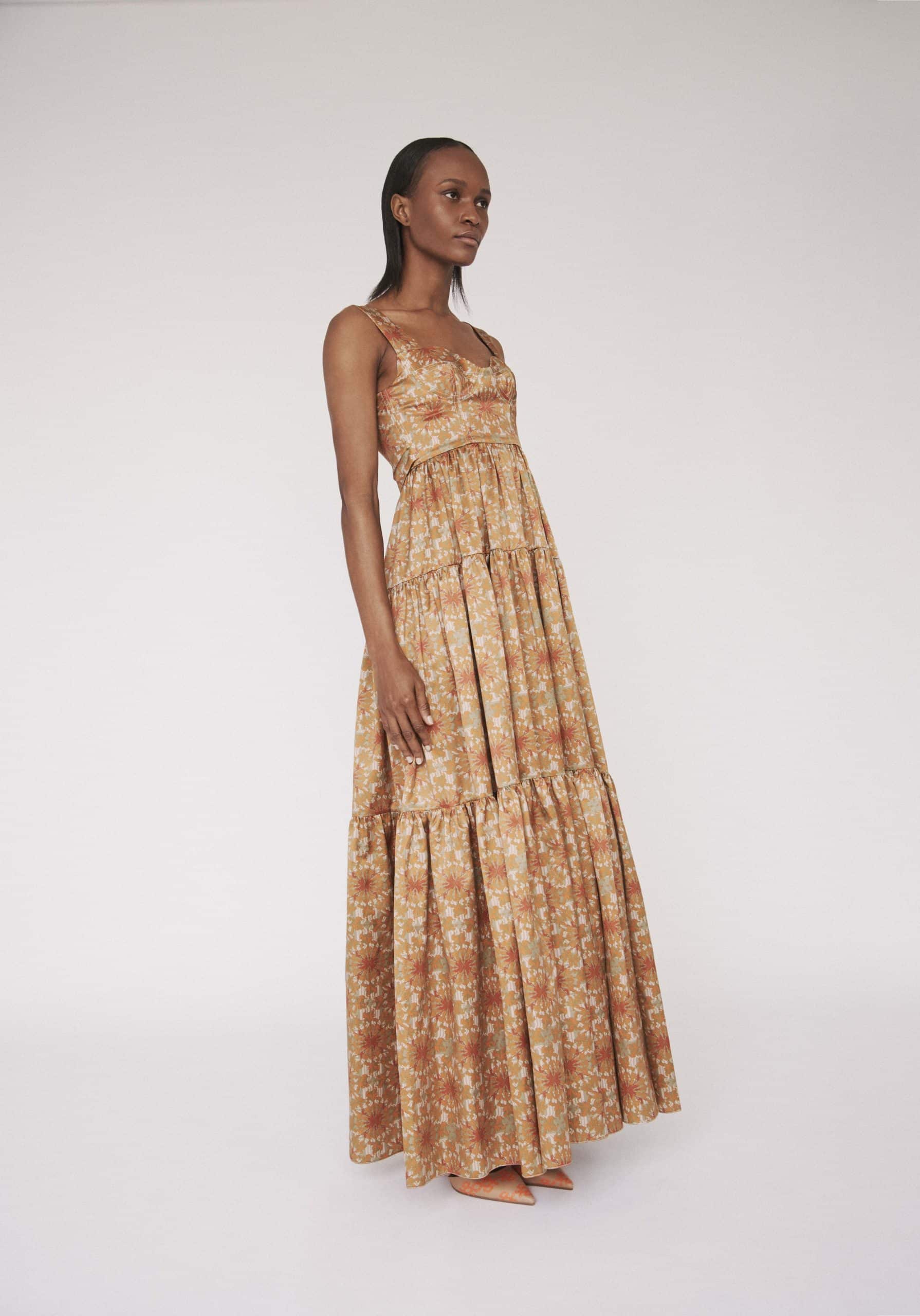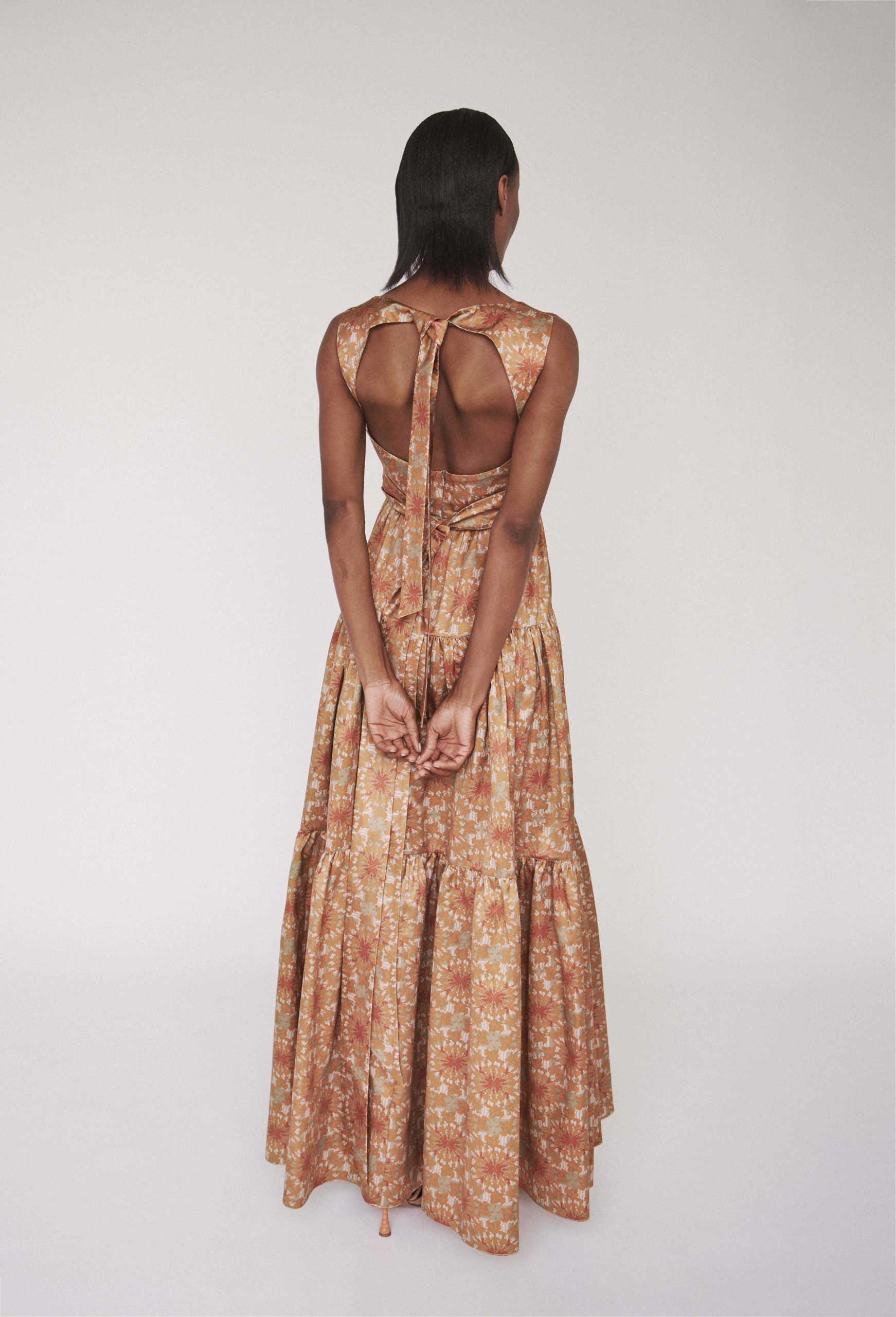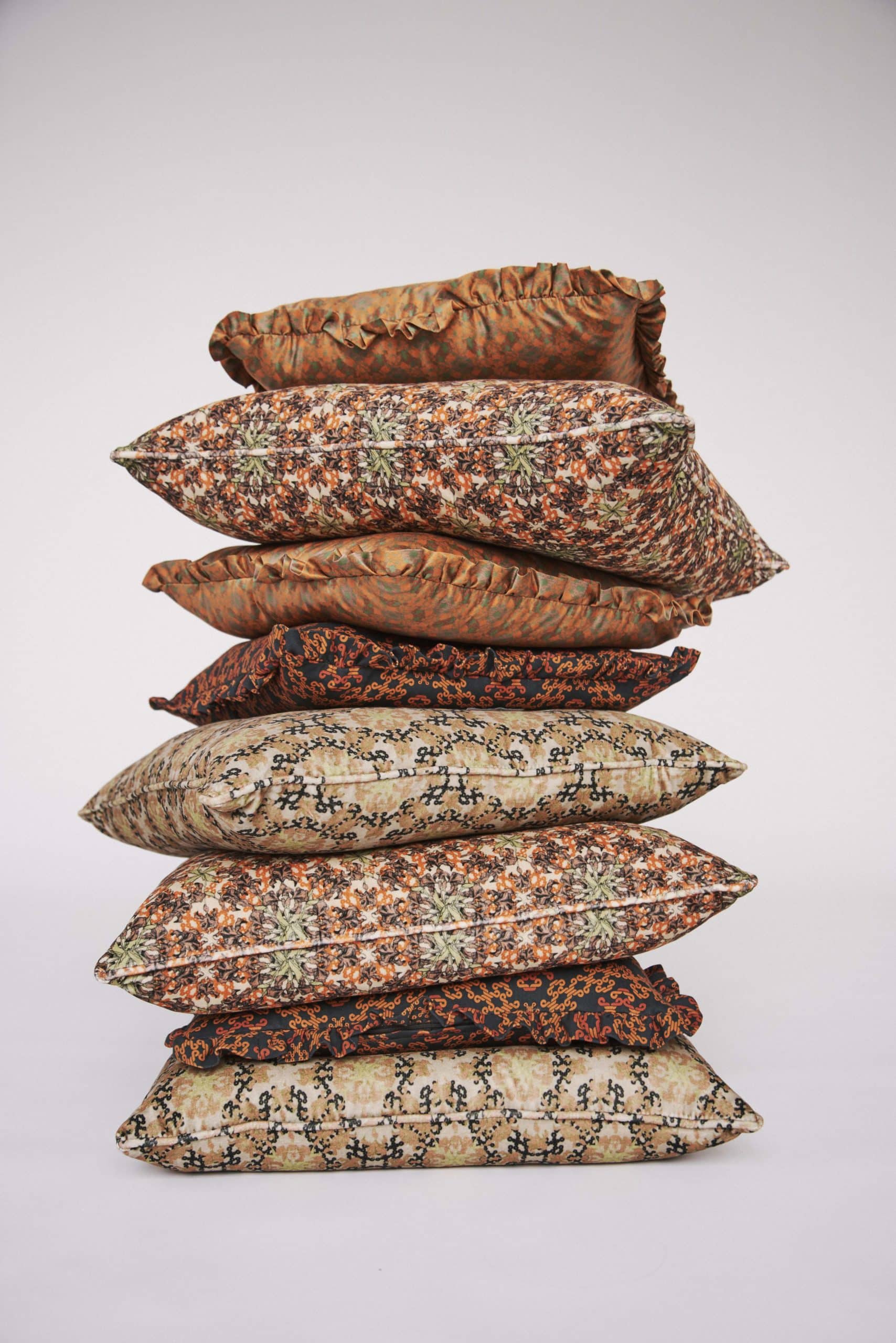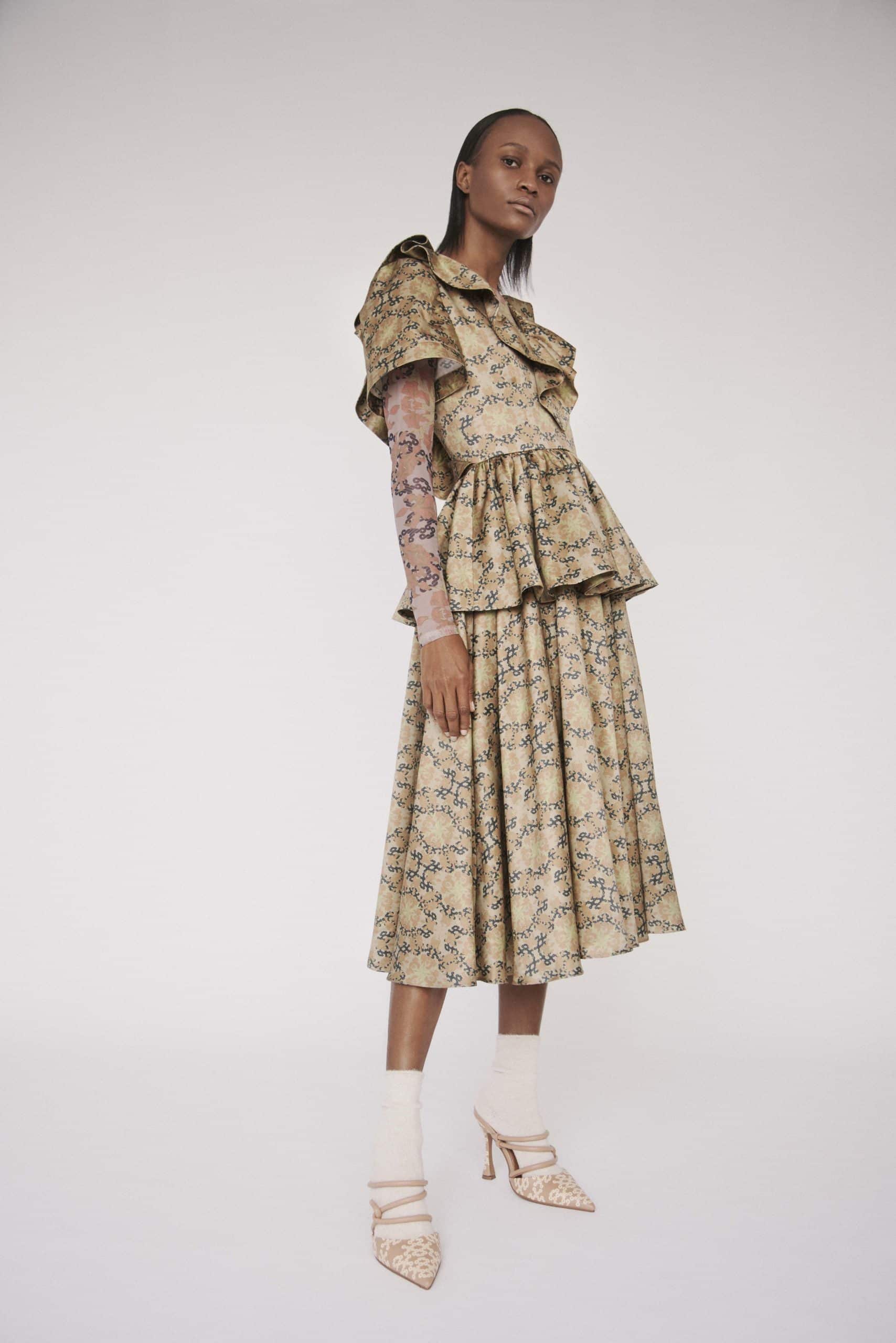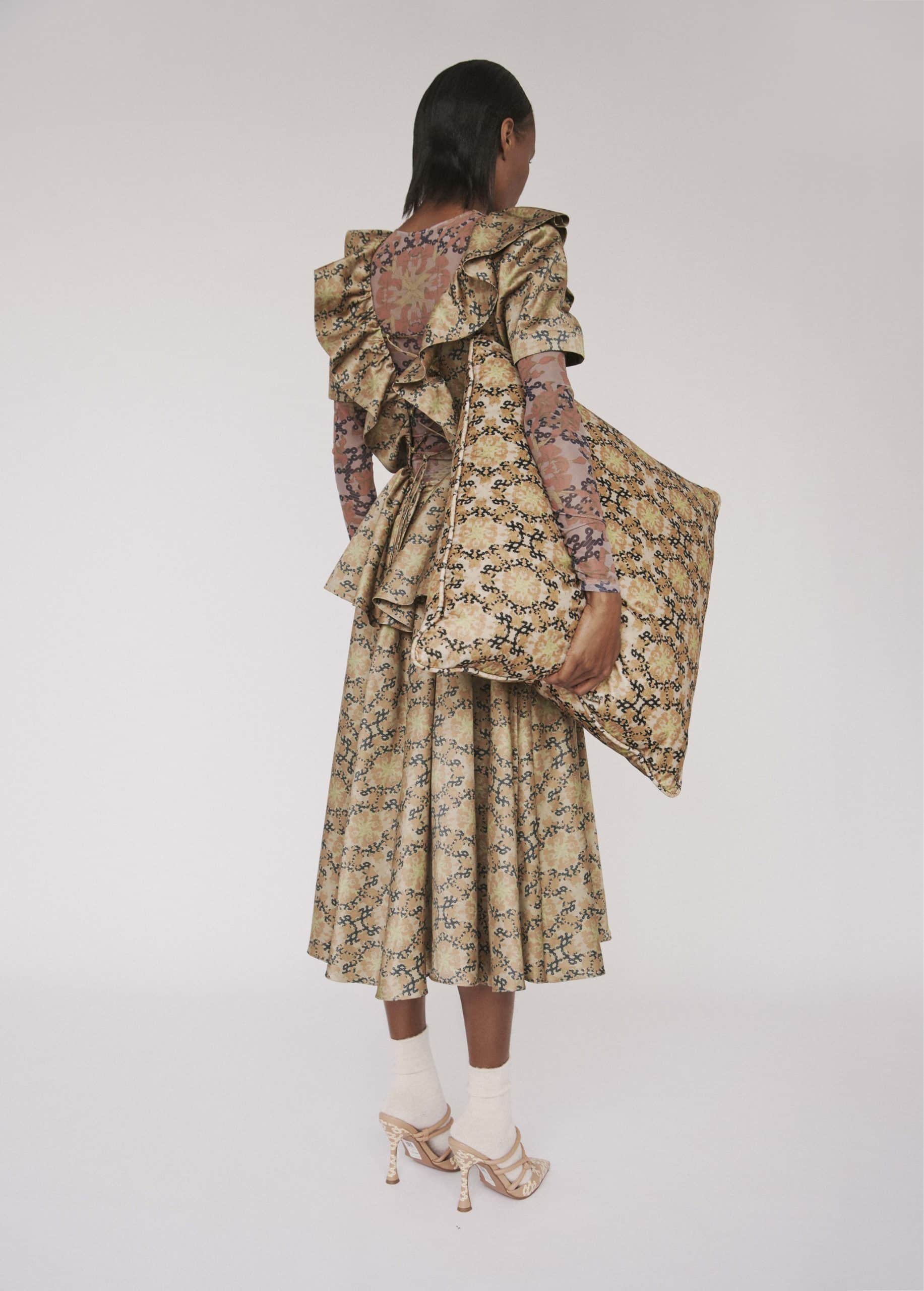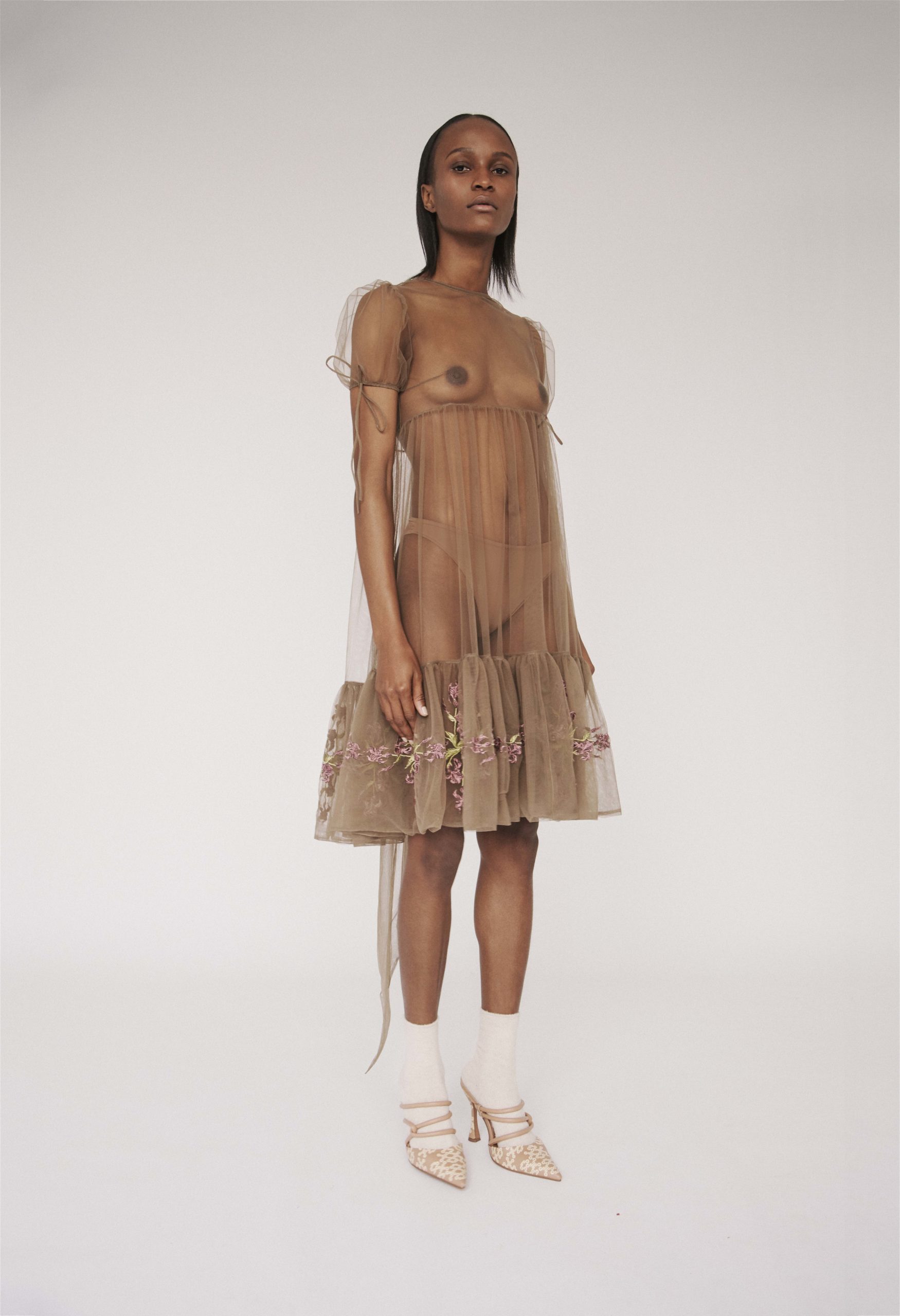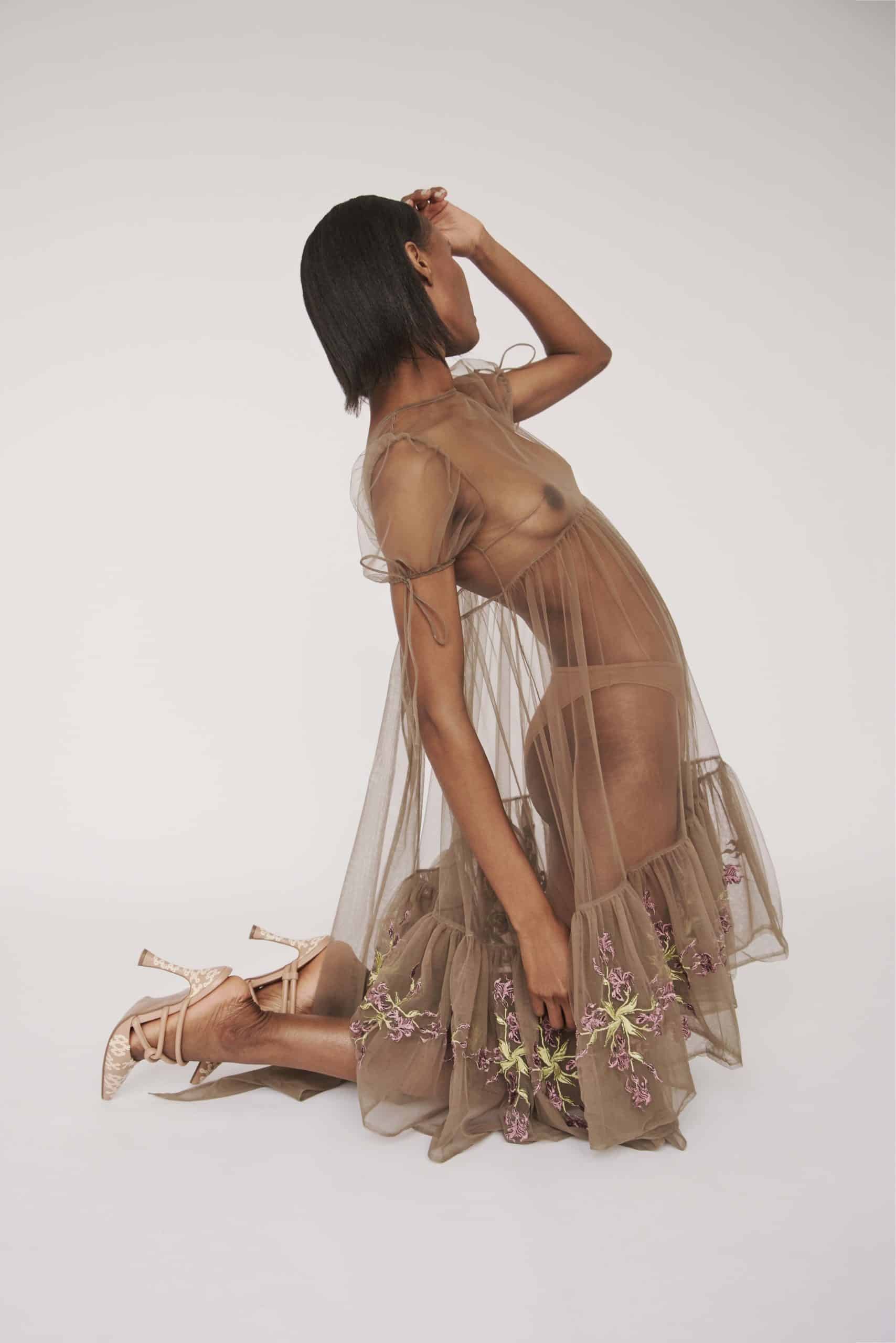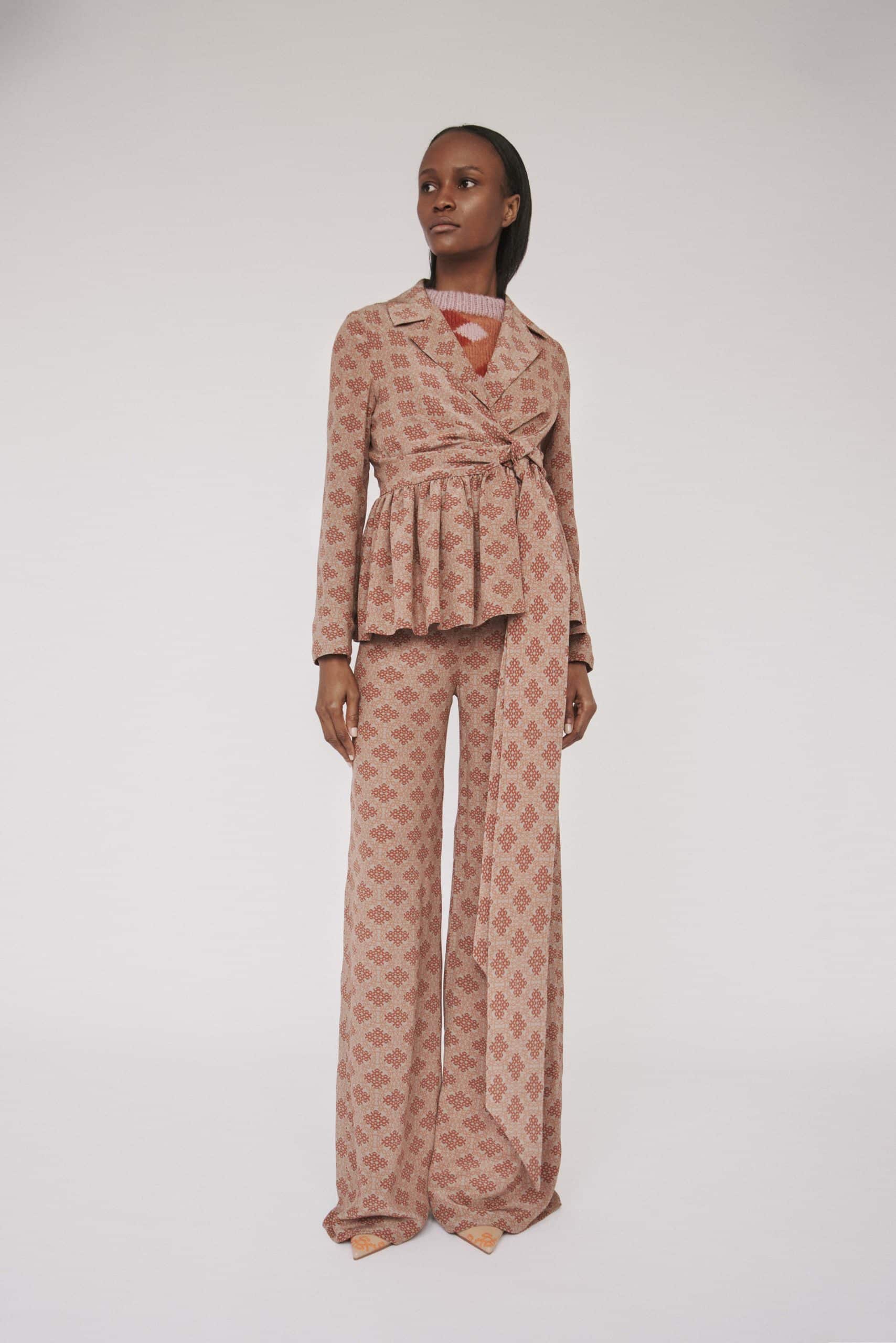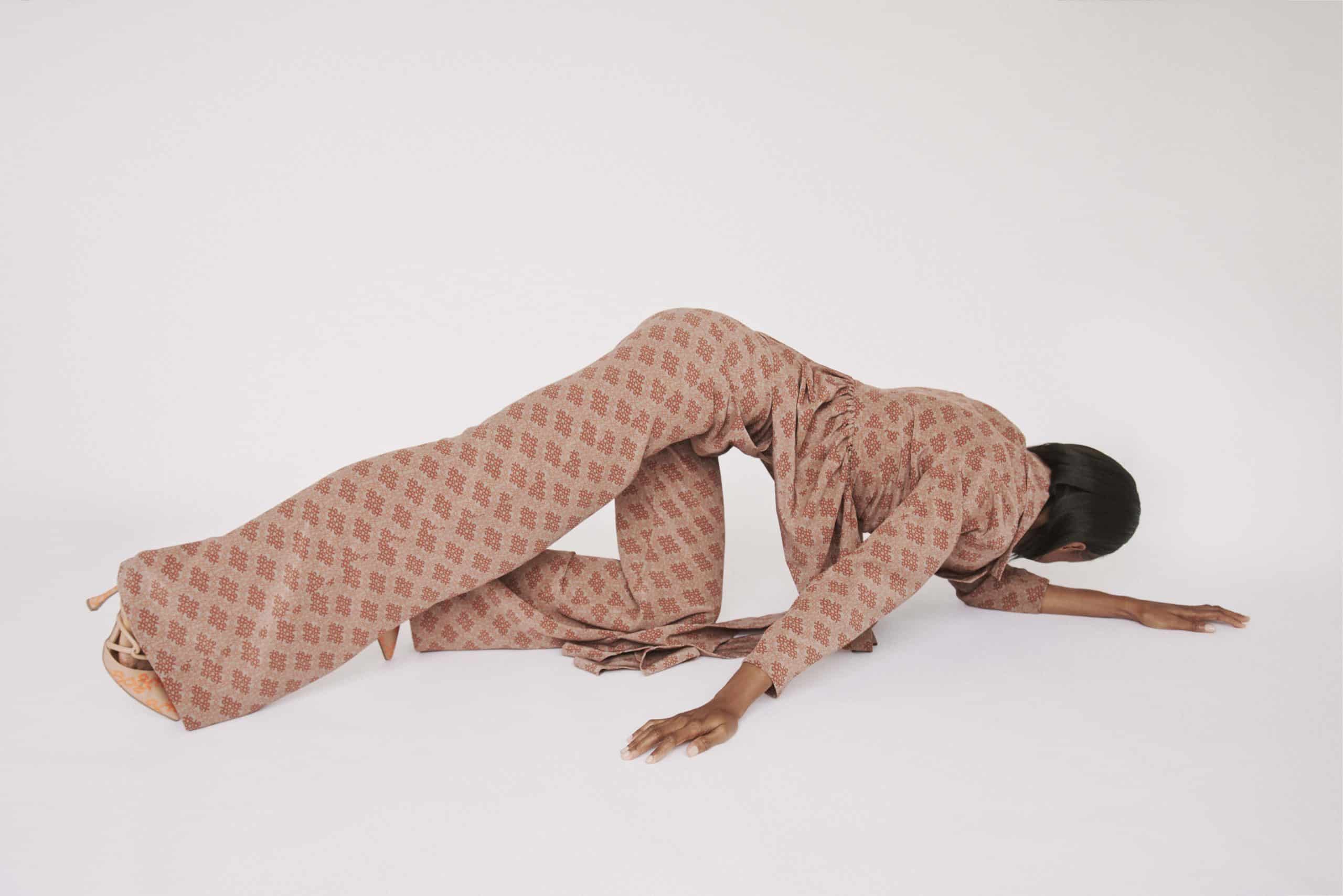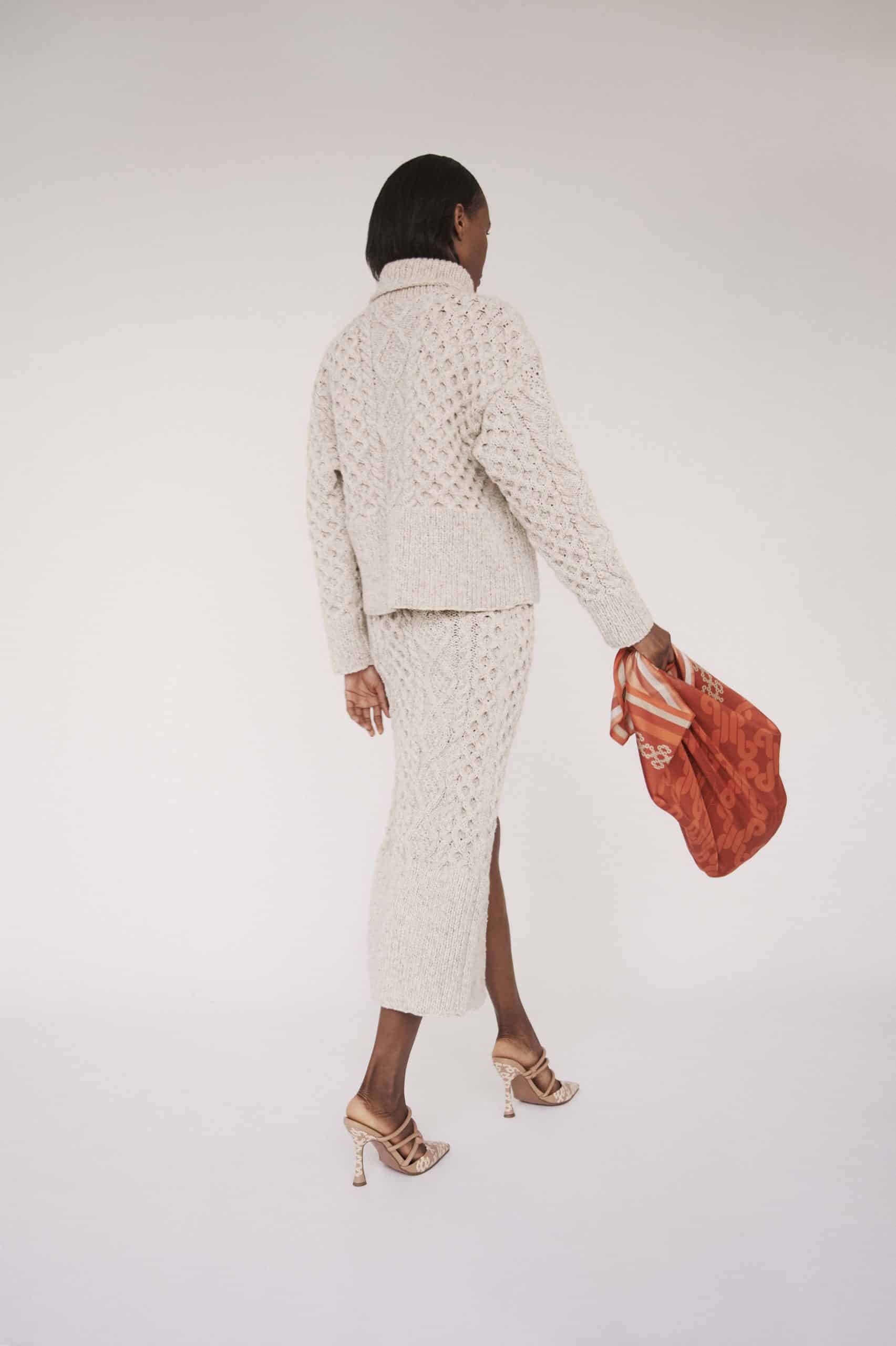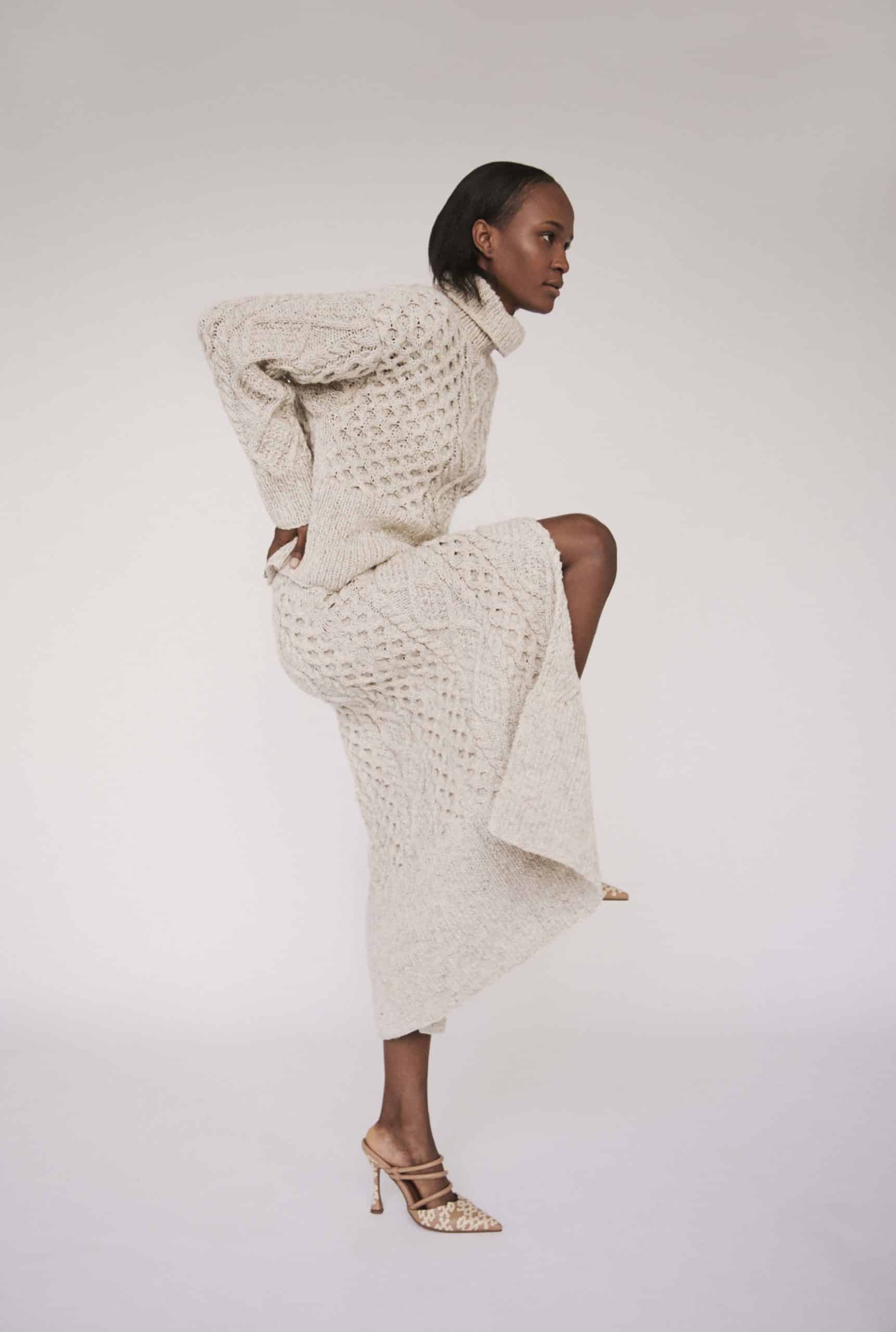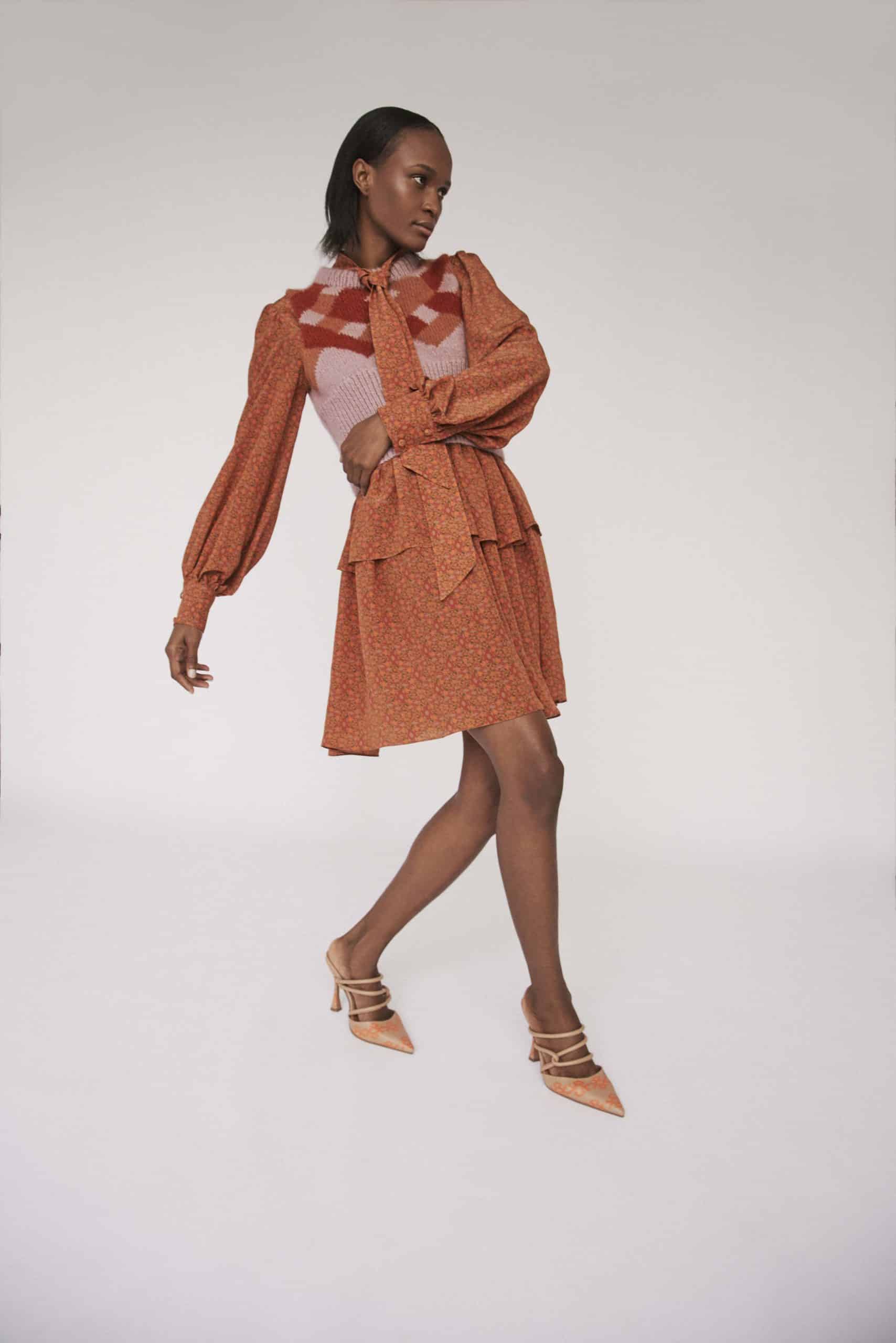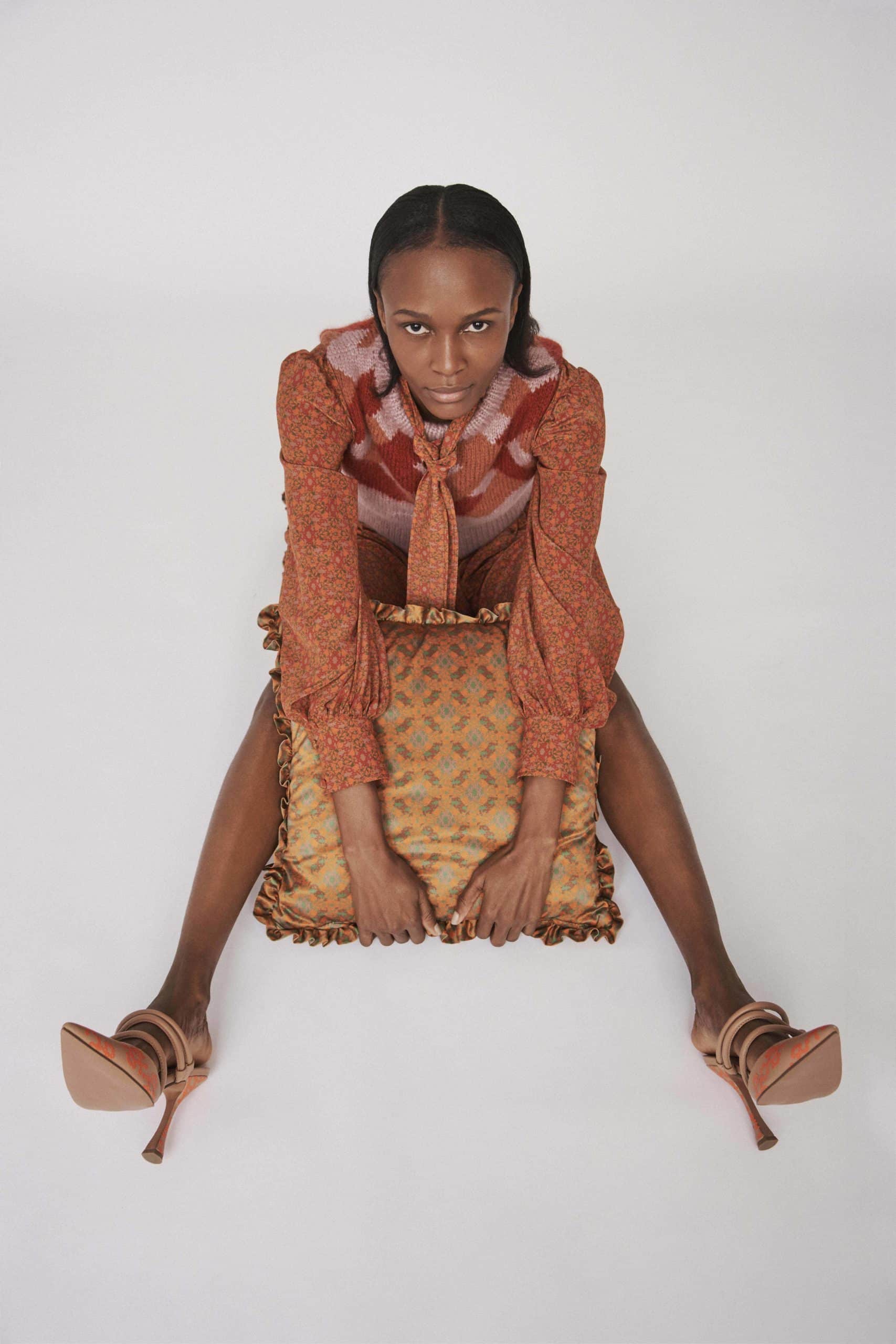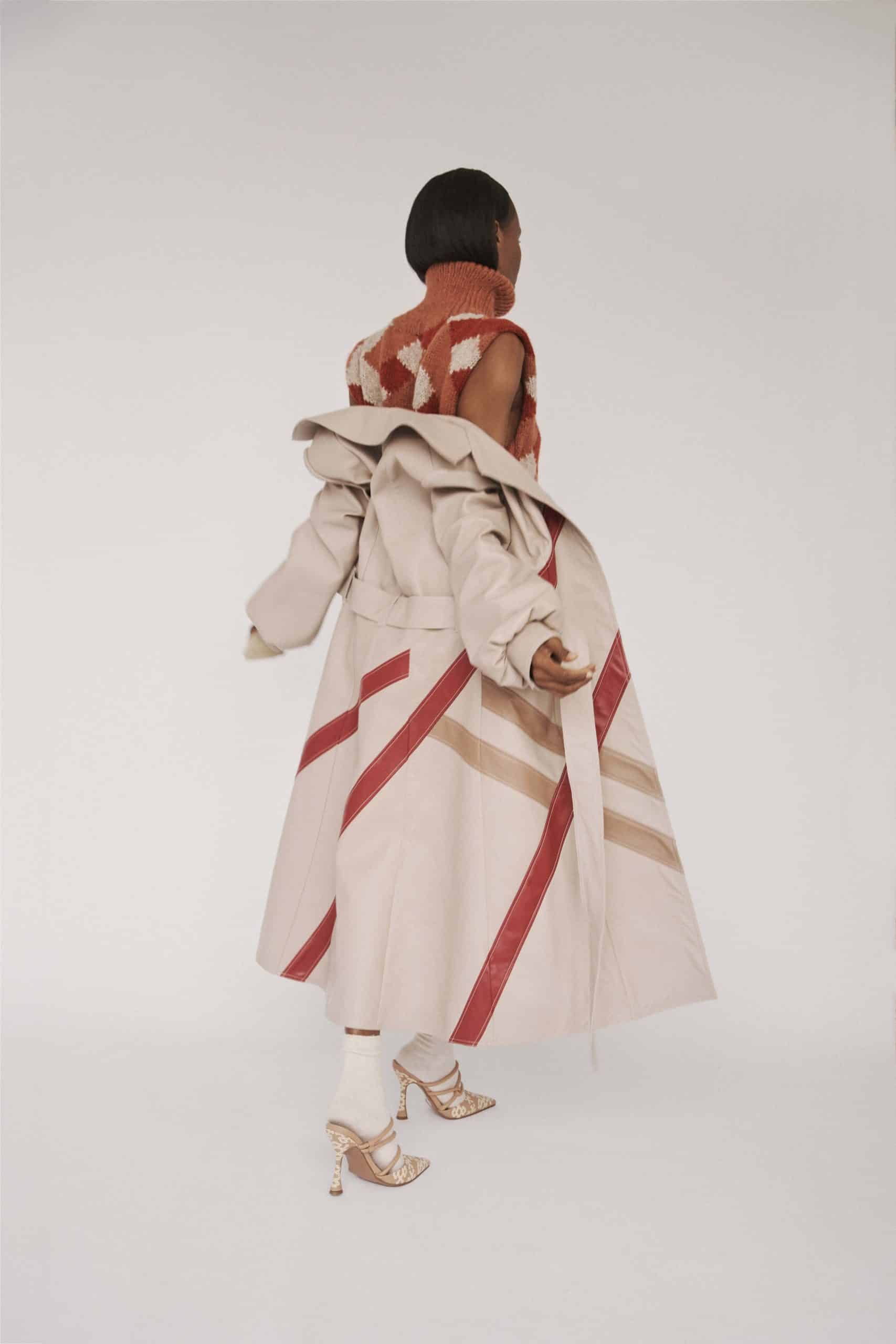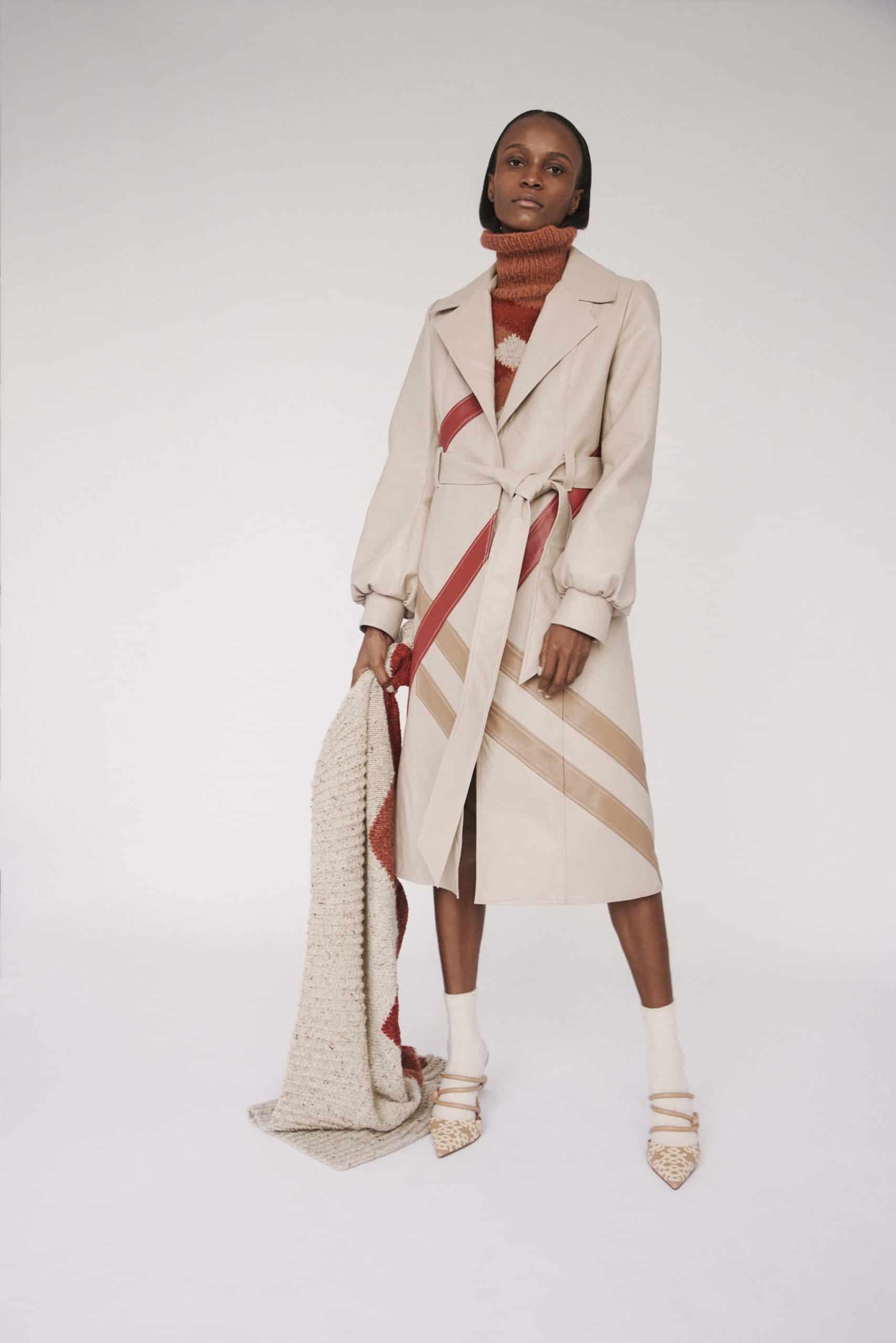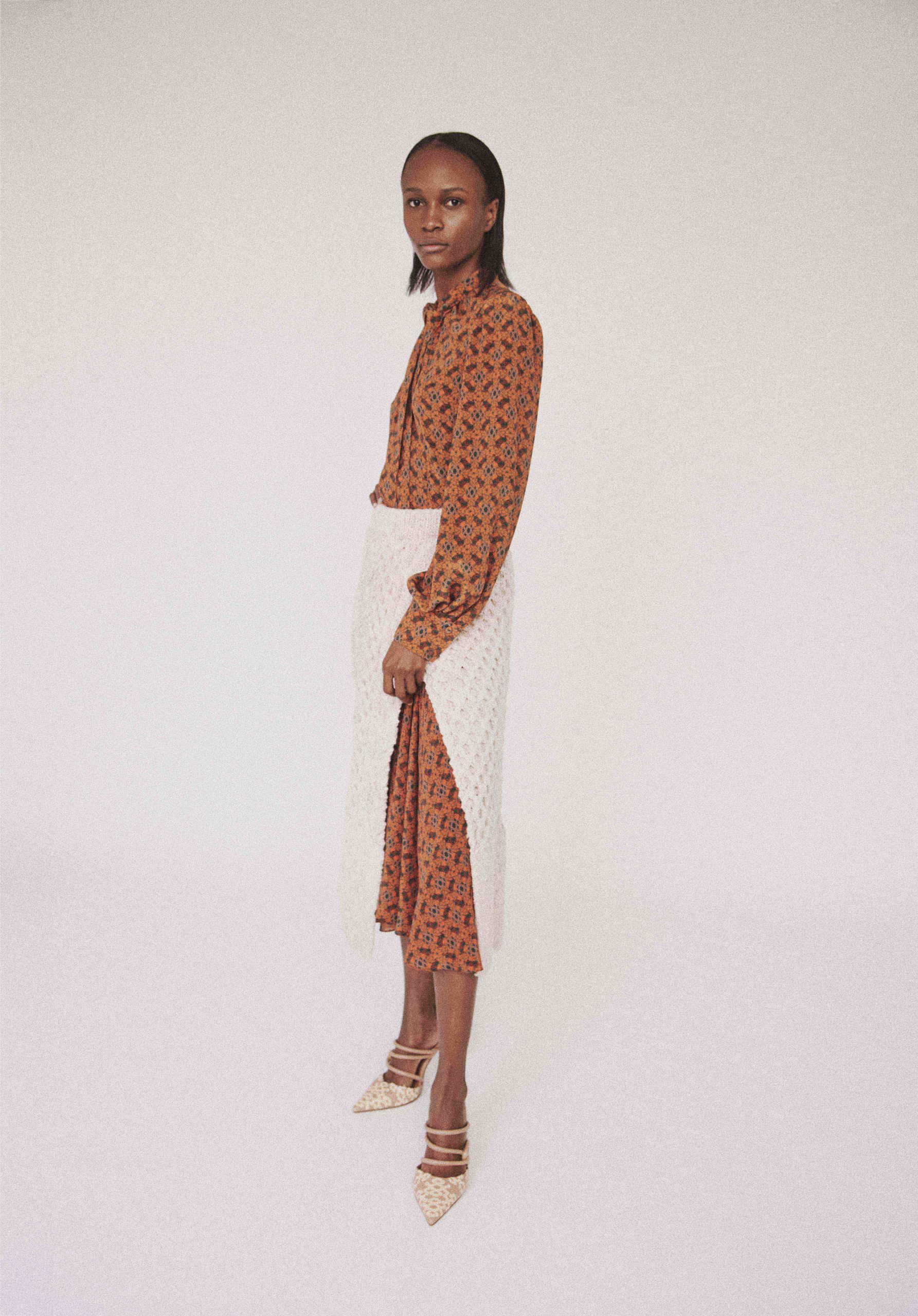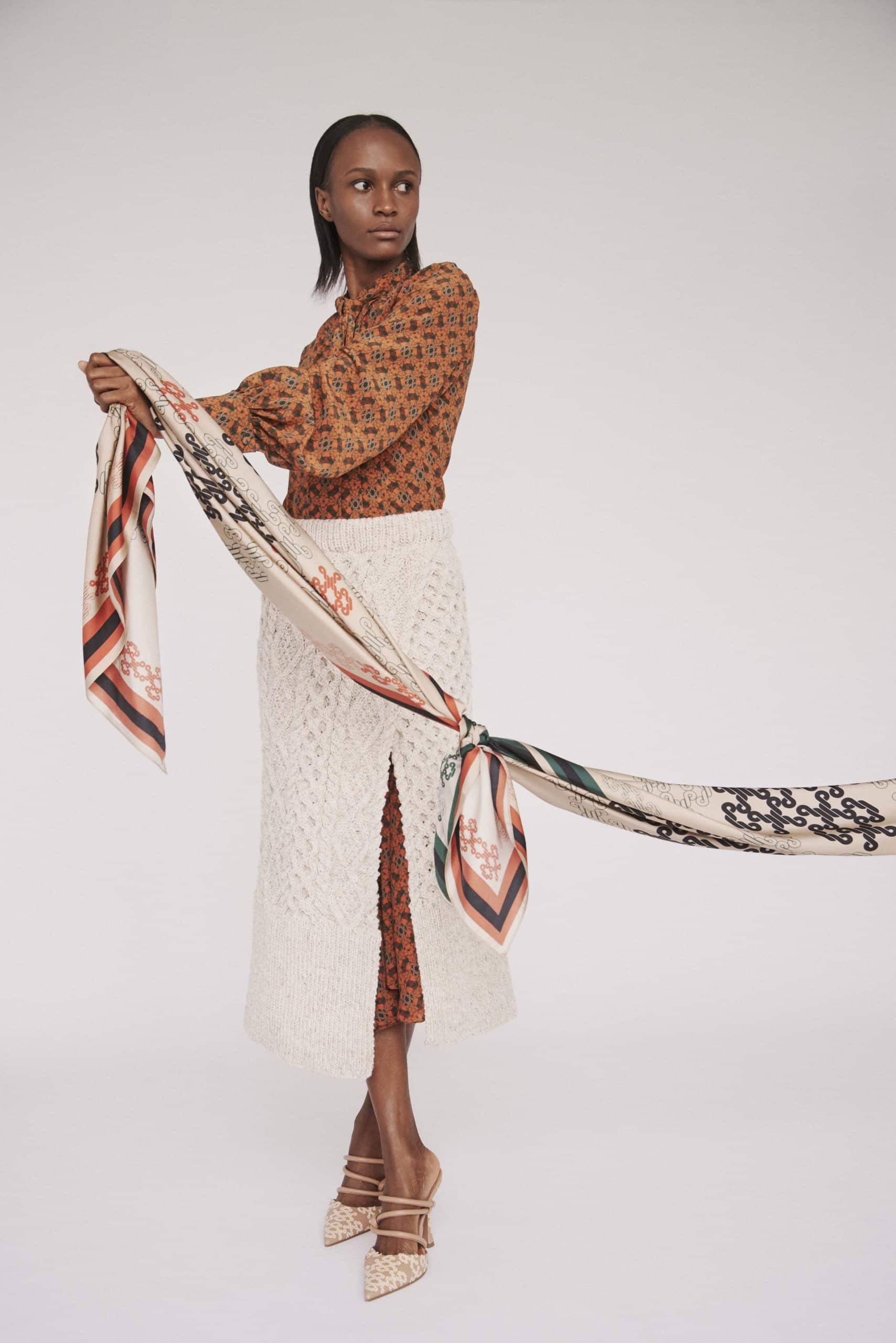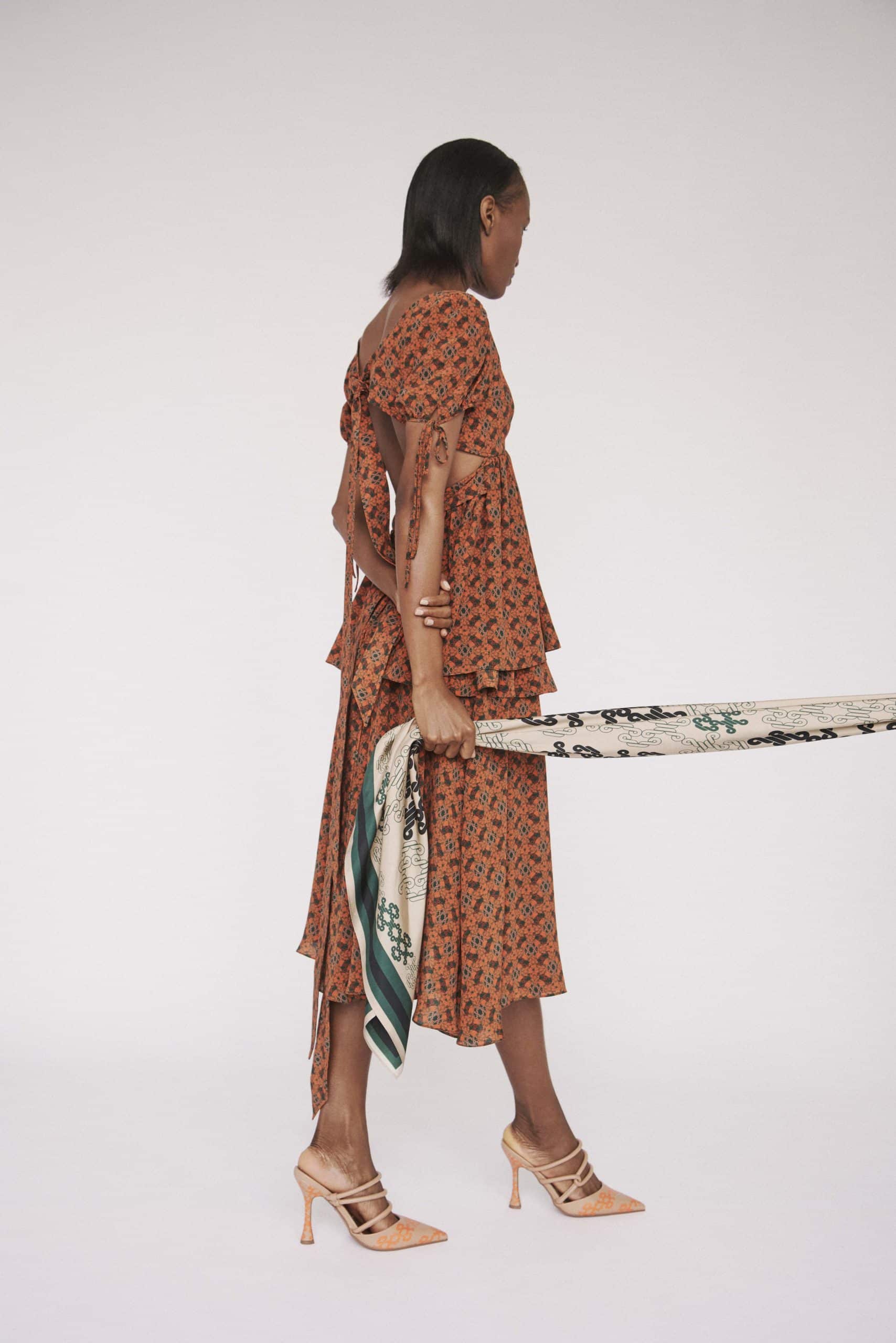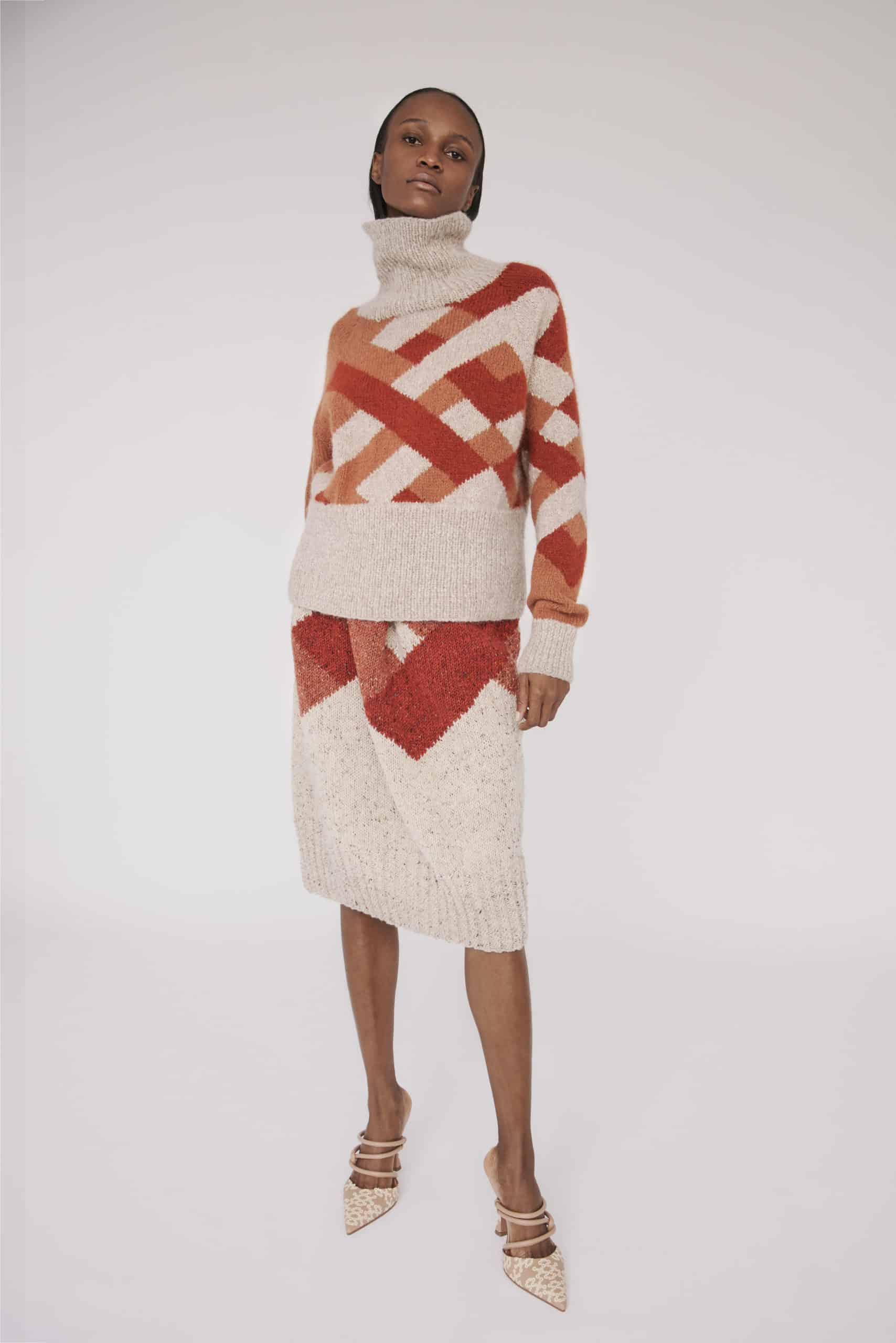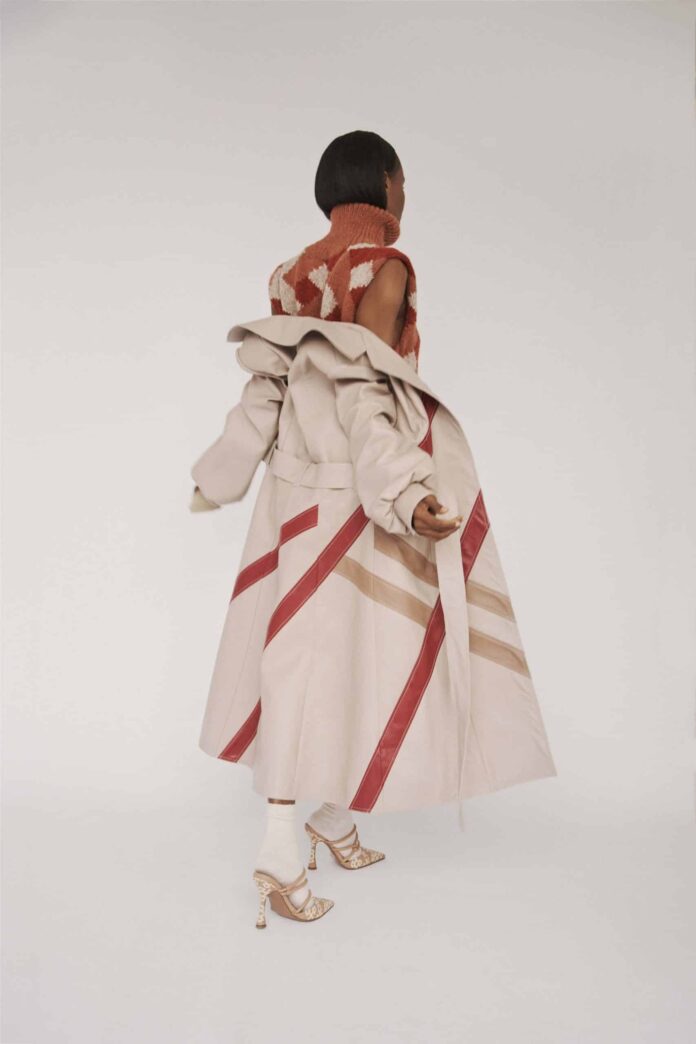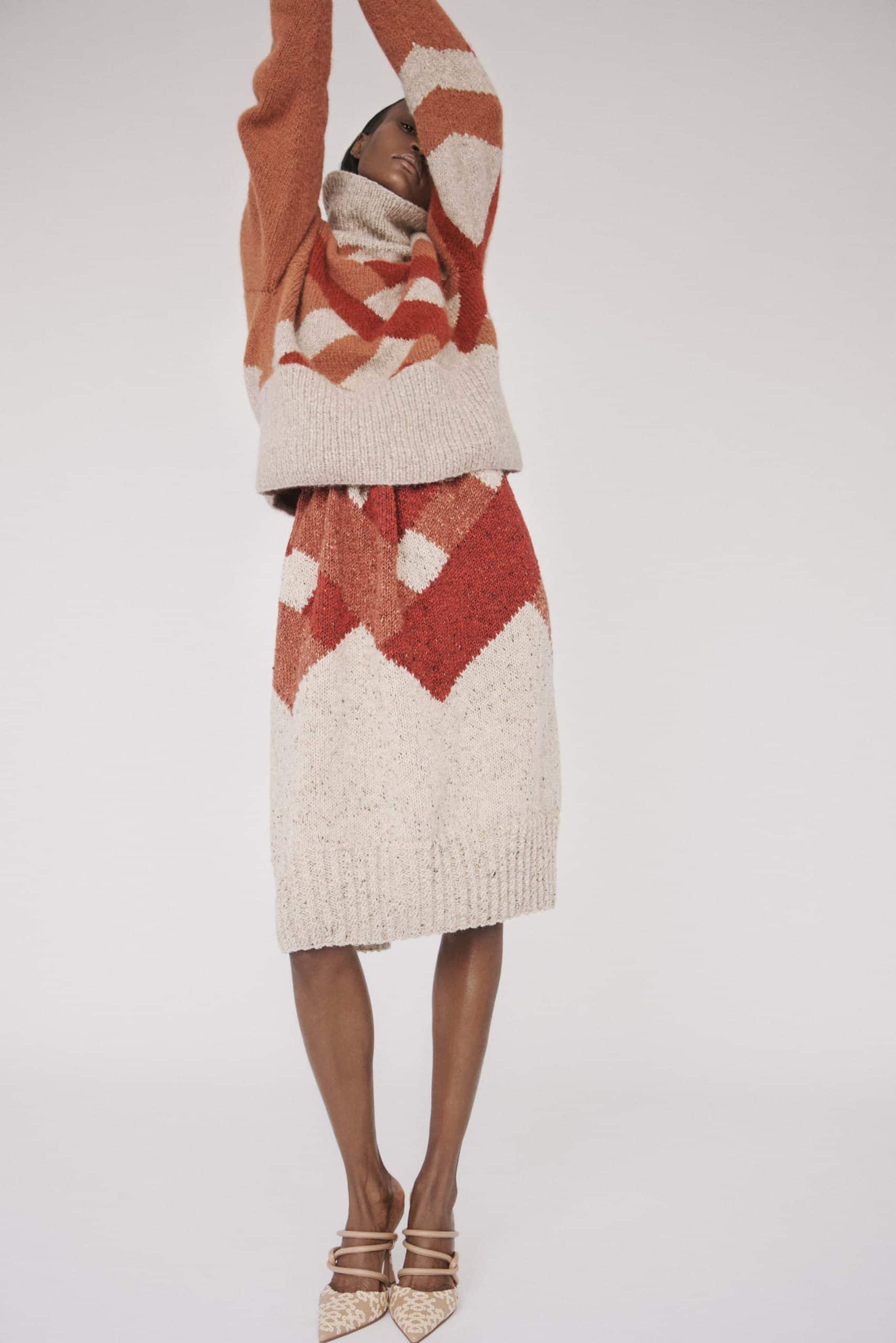Not long ago, fashion-conscious designer Katie Ann McGuigan presented her newest collection Lost Summer. The collection explored a longing for the outdoors and the warmth of light against a reimagining of life’s stability and comfort indoors. The British Isles’ seminal photography and interior design inspired her prints and textiles. Her vision came to life through the work of Belgian photographer Harry Gruyaert, blending environment and culture. His Irish Summer series was central to McGuigan’s vision, shot during a West Ireland tour in the early 1980s and acclaimed for capturing the timeless quality of fragile changing light.
To talk more about the collection, Katie joined us for an interview.
Hi Katie, how are you?
I’m doing well, thank you! I’ve recently returned to my family home in Ireland, from my London studio, after finishing the shoot for my Lost Summer collection. For me, the creative process and working tirelessly in the studio is like being in a bubble. It’s extremely integral for me to reconnect with the people around me who are important and spend some time outside of the city. This is to ground myself and make space to take a breath and reflect. It’s been a challenging year for us all, in many different ways, so I think, more so than ever before, it’s an important thing to do.
What made you name for your latest collection Lost Summer?
The concept of Lost Summer came from a combination of the references I was drawn to whilst conceptualising the collection, and the very literal feeling over the past 12 months of time being lost, and a wider sense of time being pushed and pulled out of proportion. This is something that we’ve all battled with because of the stop-start nature of the world we live in. Personally, it came from a real sense of longing for the outdoors, and to feel the warmth of light. The notion of taking things slowly and their steady stability was interesting to me, especially during a period where all of us were re-imagining a life grounded within the home and with the time to appreciate small comforts. It was a combination of all of these feelings and ideas that came together to create the mood for the Lost Summer collection.
What was the inspiration behind the collection?
I’m continuously inspired by my Irish roots and looking at artistic interpretations of this as seen by insiders and outsiders. In the past, I’ve looked at the photography of the wider British Isles that capture a moment in time, but with this collection, I felt a strong pull to return closer to home, which brought me to the work of Harry Gruyaert and his photography series “Irish Summer”. The work depicts West Ireland during the early 1980s and has the most beautiful timeless quality of fragile changing lights and the blending of environment and culture. My background and schooling is in fashion, but I grew up with a family rooted in furniture design. Seeing these images of Ireland as captured by a photographer from Belgium, and then instinctively connecting with the way both fashion, textiles and interiors are depicted as the starting point for my inspiration this season. Colour and print have always been important to me, and the quality of light within the photography and the way the softness and coolness of this transformed the mood and character of the images was something I wanted to recreate through the colour and print this season.
What was your key focus when designing Lost Summer?
I wanted to create a balance of the imagined and the everyday, something beautiful but practical, special but to be worn every day. This idea of bringing luxury into everyday dressing and finding new ways of putting outfits together, that is polished and presentable yet easy and casual is at the forefront of my mind while I design. This wasn’t unique to Lost Summer but I think, for a collection created during such a unique time where comfort and casual dressing was at the lead, made the ideas of how to capture this, even more considered.
Do you have a favourite design?
That’s like asking someone to choose their favourite child! I’m fascinated by print, so it’s this aspect of each piece that is always my favourite part of the design process and final look. The way that print transforms on the different fabrics and creates new textures, depending on the structure and shape of a garment, and who’s wearing it is impactful and captivating. This brings print and the pieces they live on to life, and thus it’s my favourite element of design.
What do you think makes a good design work?
Balance. When all aspects of design are considered and carefully balanced you get something that is unforgettable. In great design, balance is integral. The proportions, dimensions, colours, fabrics and all elements allow for a harmonious final outcome, that speaks as one entity and everything else falls aside.
How has the pandemic affected your design work?
It has changed what I long for, and how I see my own ambitions and dreams. I think this shift has in turn affected how I look at the design and what I want to create. The pandemic has had so many negative effects, but it has also given people a moment away from the life we led and a chance to stop and think about what’s most important to us, who we want to be, and how we want to be in the world we live in. As a creative person, thoughts, feelings and emotions all come together and influence the way I approach my work, and the way these have been shaped by the pandemic has definitely come to define this collection and how I will design in the future.
If you could give any advice for a person that wants to go into fashion design, what would it be?
As generic as it might sound, hard work, passion and ambition are integral building blocks. I don’t think this is limited to fashion or design but these are qualities that are important in any pursuit or venture. The skills required for fashion design may be different, but the fundamental qualities that can take people from where we are to where we want to be, are transferable across industries and disciplines.
How would you define culture?
It’s the way of life. From customs and traditions to ideas and behaviour of people and societies. It’s what we can identify with, or perceive from the outside, or immerse ourselves in.
